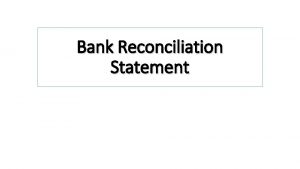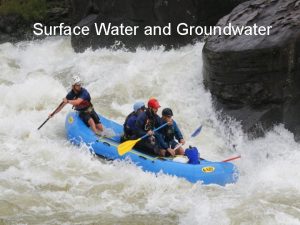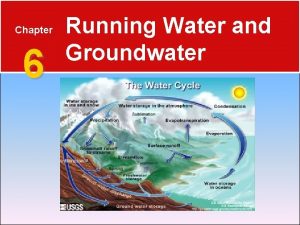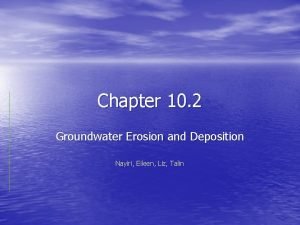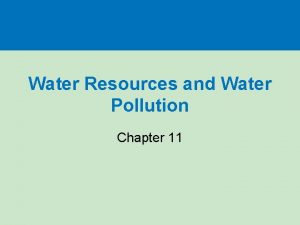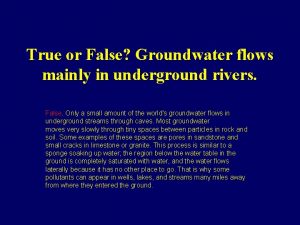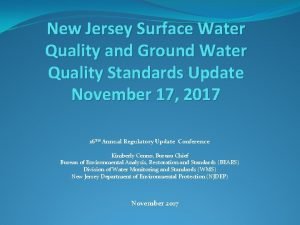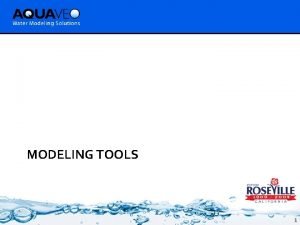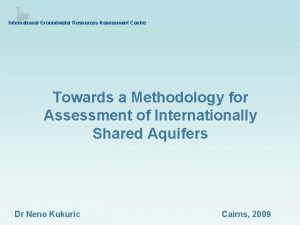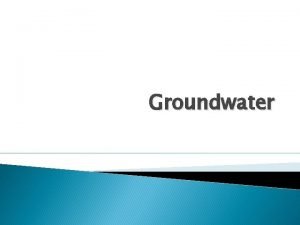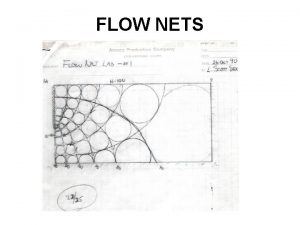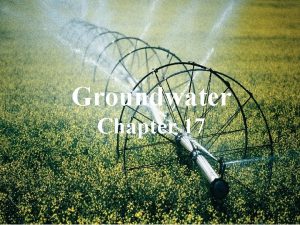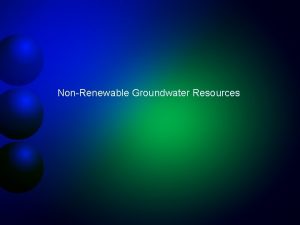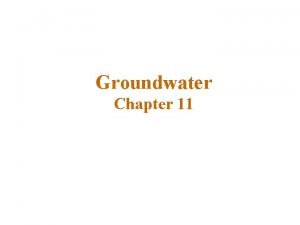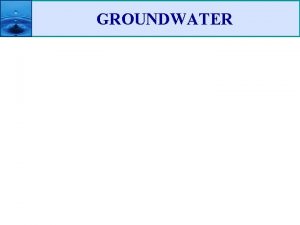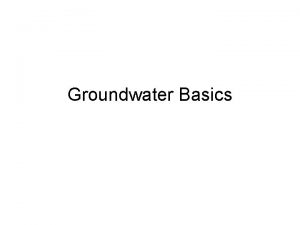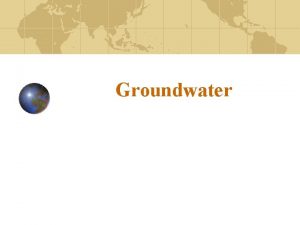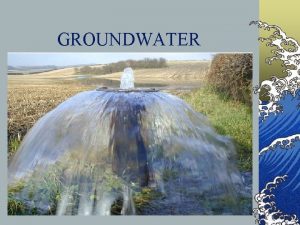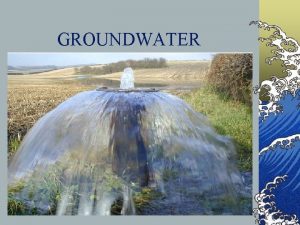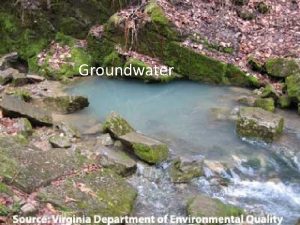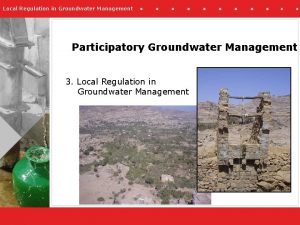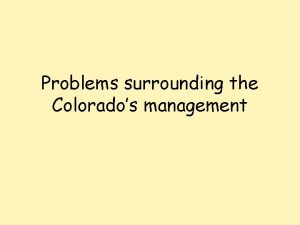Groundwater Overdraft and Management Kenneth D Schmidt Principal

















- Slides: 17

Groundwater Overdraft and Management Kenneth D. Schmidt Principal Kenneth D. Schmidt & Associates

Water-Level Hydrographs for Wells East of Sanger

Water-Level Hydrographs for Well Southwest of Madera

Water-Level Hydrographs for Lower Aquifer Wells in the Lakeside Area

Sources of Inflow Streamflow Seepage Canal Seepage Deep Percolation from Irrigation Groundwater Inflow Intentional Recharge Subtotal: Amount (AF/yr) ______________ ______________ Sources of Outflow Pumpage Groundwater Outflow Subtotal: Amount (AF/yr) ______________ Change in Storage: Inflow minus Outflow = _______

Water-level change (ft/yr) × specific yield (%) × Area = _____ (AF/yr) Specific yields commonly range from 10 to 20% For unconfined aquifers only.

San Stanislaus Joaquin Basin Merced Fresno Kings Tulare Lake Basin Kern

Early 1970’s Basin 5 D 2 million acre-feet per year Projected 2000 Basin 5 D 1. 3 million acre-feet per year 2009 (USGS PP 1760) Central Valley Present San Joaquin Valley 1. 3 million acre-feet per year 1. 5 to 2. 0 million acre-feet per year

Subsurface Geologic Cross Section Beneath Five Points Subarea

Land Subsidence in the Westlands Water District (1926 -1972)

Consumptive Use of Applied Water = ___ % Applied Water Low Values: 40 to 50% High Values: 90% Depends on topsoils and method of irrigation Commonly: 80 to 90% for drip irrigation 65 to 70% for sprinkler irrigation 40 to 50% for furrow and basin irrigation

Low irrigation efficiencies in areas with surface water supplies resulted in large amounts of recharge of low salinity water, spread out over large areas. High irrigation efficiencies result in less recharge from irrigation and higher increases in salinity for the shallow groundwater.

Compare the amount of surface water available to the consumptive use of applied water. If the surface water is greater than the consumptive use, water levels will rise and there will normally be groundwater outflow. If the surface water is less than the consumptive use, water levels will fall and groundwater inflow will be enhanced. If the surface water and consumptive use are equal, groundwater levels will be stable. The groundwater aquifer should be considered a storage space for surface water, and not a source of water supply itself.

One interpretation: If one has no surface water and is not next to a river that is a losing stream, then all of the groundwater pumpage is generally not sustainable. The only sustainable groundwater pumpage is where there is adequate surface water to balance the consumptive use, unless there is sustainable groundwater inflow to create a balance.



Determining Groundwater Flow Use Darcy’s Law: Q = T I L Q: T: I: L: amount of groundwater flow transmissivity hydraulic gradient width of flow “I” is determined from shallow and deep zone groundwater maps. “T” is determined from aquifer tests. Note: Groundwater modeling is not considered an accurate approach to determine transmissivity.
 Folio in cash book
Folio in cash book Overdraft example
Overdraft example Overdraft
Overdraft What is bank reconciliation statement
What is bank reconciliation statement Fsnb check balance
Fsnb check balance Running water and groundwater
Running water and groundwater Chapter 6 running water and groundwater
Chapter 6 running water and groundwater Groundwater erosion and deposition
Groundwater erosion and deposition The zone of aeration
The zone of aeration Groundwater pollution
Groundwater pollution Most groundwater comes from rain true or false
Most groundwater comes from rain true or false Njdep gwqs
Njdep gwqs Modflow analyst
Modflow analyst Groundwater assessment methodology
Groundwater assessment methodology Water table
Water table Septic tank contamination groundwater
Septic tank contamination groundwater Groundwater flow net
Groundwater flow net The term geologists use for underground water is
The term geologists use for underground water is



